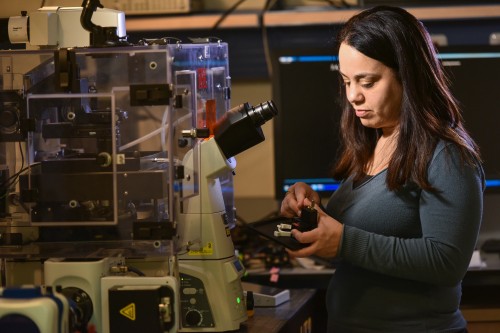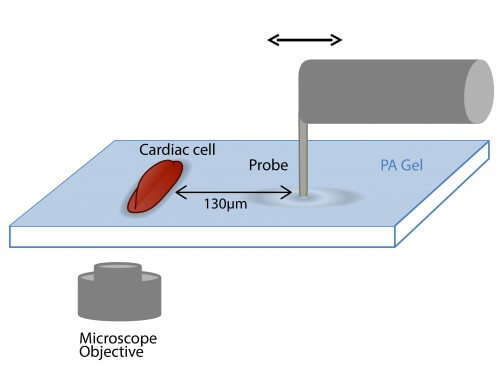A team of researchers led by Associate Professor Sheli Tslim from the Faculty of Mechanical Engineering at the Technion was able to "dictate" to the heart cells the rate at which they will beat, using only mechanical influence. The discovery about the importance of mechanical communication is expected to affect the understanding and treatment of heart diseases

Researchers at the Technion were able to "dictate" to heart cells the rate at which they will beat, and this through mechanical influence only. The effect was achieved by means of an artificial 'mechanical cell', which produces cyclical mechanical deformations simulating a nearby heart cell on the surface on which the tested target cell grows. In a short time the target cell adjusted its beats to the rhythm dictated to it. Furthermore, the cell continued to beat at this rate for a full hour after the mechanical stimulation stopped.
The research published on Thursday in the journal "Nature Physics" was conducted in the laboratory of Associate Professor Sheli Tsil, from the Faculty of Mechanical Engineering at the Technion, who studies the intercellular communication (Cell-cell communication) for the subject. "Intercellular communication is essential for cell and tissue growth, development and functioning," she explains. "Until now, it was customary to assume that this communication takes place by chemical and electrical means only, but we have shown that the cell is endowed with the ability of mechanical sensing (cell mechanosensing) and it responds to mechanical changes in the environment - for example, to mechanical deformations created as a result of the application of forces by neighboring cells. Furthermore, the range of action of the mechanical effect is greater than that of the electrical and chemical effects. Now we have discovered that the duration of the effect is also greater when the stimulation is mechanical, which indicates that mechanical communication causes biochemical changes in the cell that remain over time."
In the study, Prof. Mishna Tsil together with her team showed that heart cells synchronize with each other even when they are not adjacent to each other; It is enough for them to be on the same elastic substrate, namely the heart tissue, since the mechanical effect "passes" through the substrate. Now, as mentioned, it turns out that this effect is maintained even after the cessation of stimulation (the mechanical cell). "In the current study, we show that it is possible to 'train' an isolated heart cell so that it beats at the desired frequency, by means of mechanical stimulation of the substrate on which it is located. In addition, we show that mechanical communication plays an important role in the physiology of the heart: it is essential for the various cells to translate the electrical signal into a uniform and shared mechanical beat. The practical conclusion is that the addition of a mechanical aspect to pacemakers will significantly improve their effectiveness."
Associate Prof. Shelli Tslim completed her three degrees - the first in chemistry and computer science, the second and third in physical chemistry, at the Hebrew University of Jerusalem. She completed her post-doctorate at Caltech University, with Professor Dave Tirrell, a chemist specializing in polymers. Her research is an excellent example of interdisciplinary research. She is a biophysicist who started her career as a theoretician, became an experimenter, and is currently researching mechanical sensing in living cells at the Faculty of Mechanical Engineering.

Synchronized beating of mechanically coupled cardiac cells: time-lapse photography of a pair of beating cardiac cells on a substrate with a stiffness of 3.8kPa. The phase difference (left) and calcium imaging (right). The distance scale is 20 microns.
The deformation field obtained in the substrate during the synchronized beating of mechanically coupled heart cells: time-lapse imaging of the deformation field created by a pair of beating heart cells on a substrate with a stiffness of 3.8kPa. Fluorescent particles inserted into the gel allow tracking of the field of deformations in the gel.
